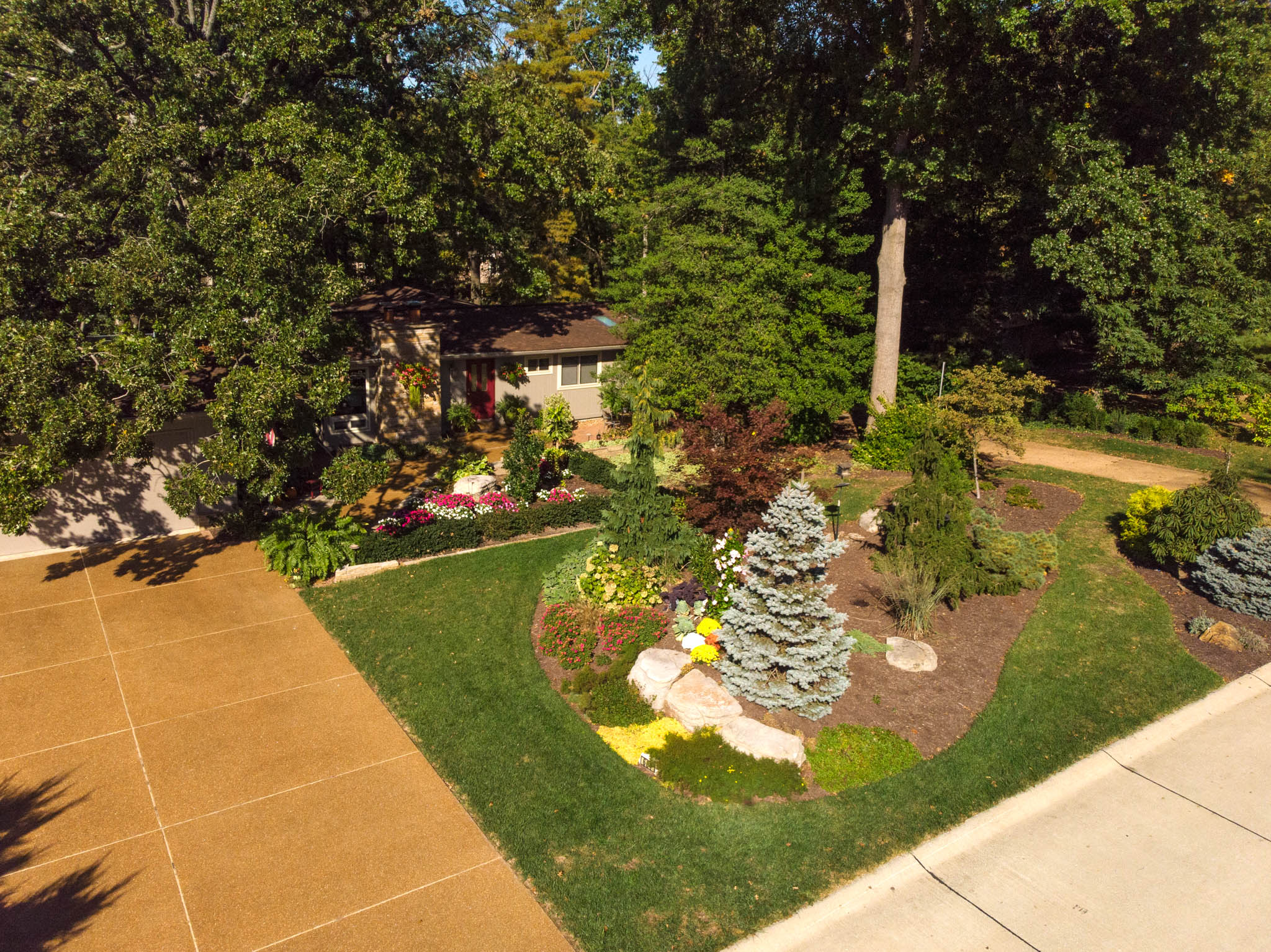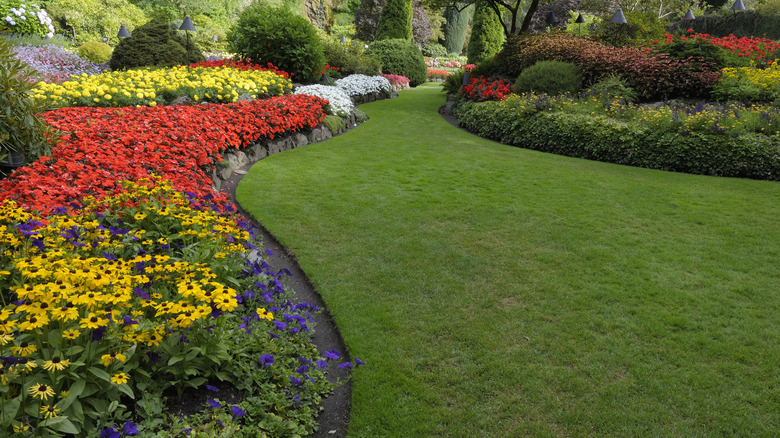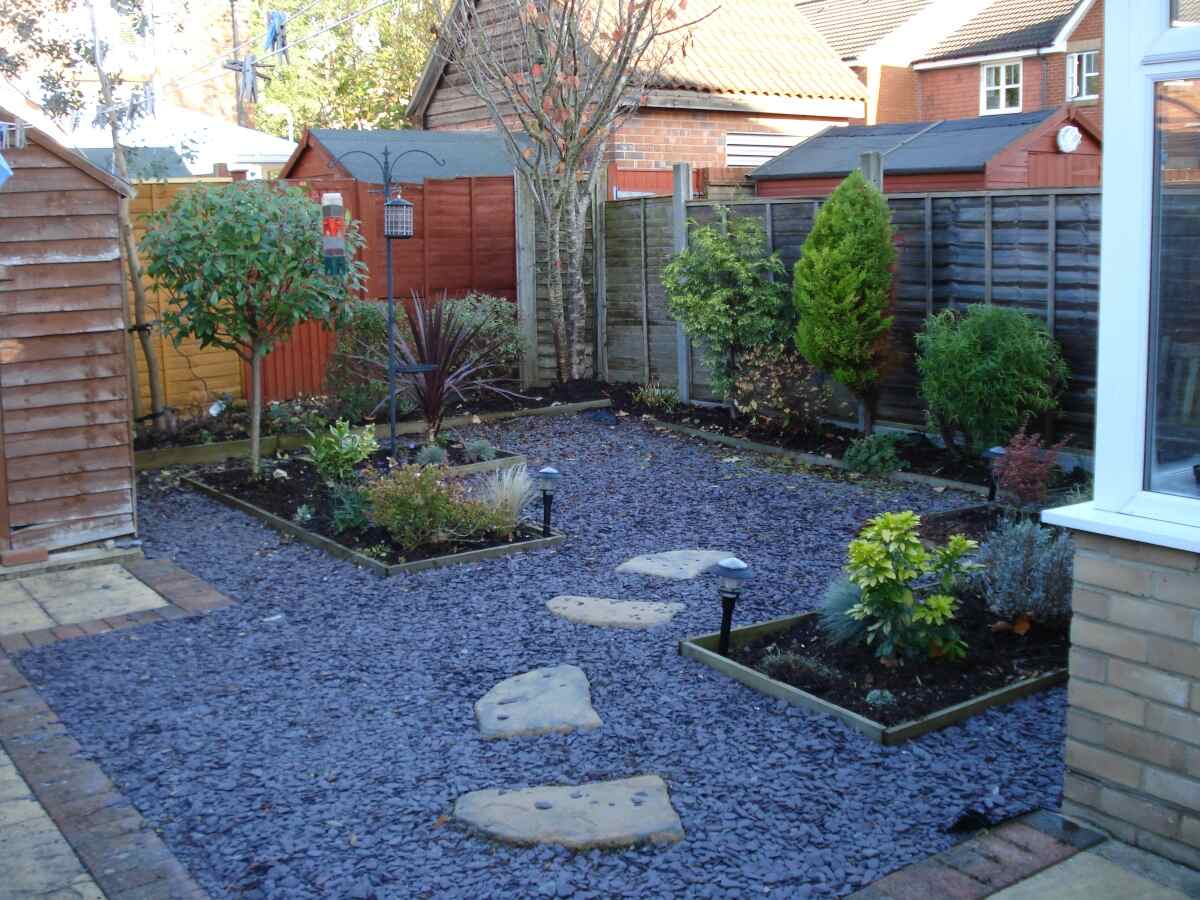Discovering Different Types of Landscape Design to Improve Your Outdoor Environment
Landscaping plays an important duty in defining exterior spaces. Different styles, from standard yards to modern-day minimalist layouts, supply distinct advantages for improving aesthetic appeals and feature. Including components like xeriscaping and indigenous plants can add to eco-friendly equilibrium. Understanding the interaction of hardscape and softscape is vital for creating welcoming environments. The selections readily available can be overwhelming, motivating one to assess which design finest aligns with their vision for an outdoor shelter.
Traditional Garden Landscape Design

While lots of contemporary yards welcome minimalism and indigenous growings, standard garden landscape design stays a cherished method that stresses proportion, framework, and ornamental functions. This design frequently includes formal geometric designs, where paths, hedges, and flowerbeds are organized with accuracy. Central prime focus, such as water fountains or sculptures, attract the eye and offer a feeling of harmony.Traditional landscape design often consists of a variety of plant kinds, showcasing seasonal blossoms and evergreen aspects. Timeless shrubs, perennials, and annuals create lively colors and textures throughout the year. Furthermore, arcs, trellises, and pergolas include upright rate of interest and offer as assistance for climbing up plants, boosting the total aesthetic.The use all-natural products, such as stone and timber, more enriches the standard landscape, adding to a classic top quality. Inevitably, this design welcomes leisure and enjoyment, making it a beloved choice for those looking for a picturesque outside setting.
Modern Minimalist Landscape Design
Modern minimal landscape design emphasizes simpleness and performance, characterized by clean lines and open rooms. Trick attributes include a limited plant scheme and thoughtful hardscape design that prioritizes use and aesthetic appeal. Reliable plant option approaches better enhance the minimal strategy, developing relaxing outdoor atmospheres that encourage relaxation and reflection.
Trick Features of Minimalism
An expanding pattern in landscaping is the accept of minimalism, defined by simplicity and capability. Minimalist landscape design concentrates on tidy lines, open areas, and a limited color palette, advertising a sense of tranquility. Components are thoroughly curated to prevent mess, enabling each element to stand out. The usage of natural products, such as stone and timber, boosts the natural feel while maintaining a visual equilibrium. Furthermore, minimal layouts usually include geometric forms, which can create visual passion without frustrating the senses. Water functions may be included, functioning as centerpieces that enhance serenity. Overall, minimalism in landscaping emphasizes the appeal of restraint, permitting nature's fundamental qualities to shine through in an unified outdoor setting.
Plant Selection Methods
Efficient plant choice is crucial for attaining the wanted aesthetic in modern-day minimal landscape design. The focus ought to get on simpleness, utilizing a restricted scheme of plants that match each various other and the surrounding environment. Indigenous plants are typically ideal, as they need much less upkeep and water, promoting sustainability. Picking species with differing heights and textures can include visual passion without overwhelming the room. Grouping plants in collections as opposed to spreading them boosts cohesion and strengthens the minimalist theme. Evergreen varieties can offer year-round framework, while seasonal blossoms introduce subtle shade adjustments. Eventually, the objective is to develop a peaceful exterior room that symbolizes harmony and harmony through thoughtful plant choices.
Hardscape Design Concepts
Necessary components in hardscape style considerably add to the general aesthetic appeals and functionality of minimal landscaping. This design strategy emphasizes tidy lines and downplayed products, creating an uncluttered aesthetic experience. Secret components consist of pathways, patio areas, and maintaining walls, which not just define areas however likewise enhance availability and functionality. Making use of products such as concrete, rock, and wood is prevalent, mirroring an all-natural yet contemporary visual. Integrating geometric forms and in proportion layouts better enhances the minimal viewpoint, permitting an unified mix with surrounding plant. Furthermore, proper water drainage and erosion control are necessary considerations, making certain longevity and sustainability. Inevitably, efficient hardscape style offers as a structure that matches softscape aspects while keeping balance and simplicity in outdoor environments.
Cottage-Style Landscaping
Cottage-style landscape design uses a wonderful method to developing inviting outdoor spaces. By including lovely plant combinations, this design promotes a sense of warmth and whimsy. The emphasis on relaxing, well-defined locations encourages relaxation and pleasure of nature.
Lovely Plant Combinations
Although many house owners look for to create an attractive exterior space, achieving the appeal of cottage-style landscape design commonly rests on thoughtful plant combinations. Lively blossoms, lush vegetation, and aromatic natural herbs can be skillfully combined to evoke a sense of whimsy and nostalgia. As an example, integrating lavender, daisies, and foxgloves creates a colorful tapestry that attracts pollinators while providing a wonderful scent. Incorporating decorative lawns like miscanthus can add texture and movement, complementing the softer flowers. Additionally, blending perennial and annual plants warranties continuous shade throughout the seasons. Using mountain climbers, such as clematis or honeysuckle, can improve vertical rate of interest. In general, these combinations not only beautify the landscape however additionally foster a inviting and captivating environment.

Relaxing Outside Areas
Producing relaxing outside spaces calls for a mindful mix of comfort and beauty, complementing the vibrant plant mixes found in cottage-style landscaping - Outdoor Lighting Installer. These locations usually include welcoming seating plans, such as weathered wood benches or supported chairs surrounded by lavish plant. Soft lights, like fairy lights or lights, adds heat, changing the room into a tranquil retreat. Incorporating elements such as trellises adorned with climbing up roses or great smelling herbs enhances sensory experiences. Additionally, paths made of rustic stones invite expedition and connection with nature. Decorative touches like birdbaths or wayward yard art add to a sense of fancifulness. Ultimately, the objective is to produce a charming atmosphere that motivates relaxation and pleasure of the elegance surrounding these comfortable exterior havens
Xeriscaping for Water Conservation
Just how can areas balance aesthetic landscape design with journalism requirement for water preservation? Xeriscaping emerges as a viable remedy, promoting lasting methods that lessen water use while improving outdoor elegance. This landscaping method concentrates on making use of drought-resistant plants indigenous to the area, which call for significantly less water than traditional gardens. By integrating mulch and reliable watering systems, xeriscaping reduces evaporation and overflow, additional conserving valuable water resources.Communities can produce aesthetically enticing landscapes with careful preparation, picking a varied range of textures and shades that flourish in arid conditions. Furthermore, xeriscaping urges the usage of decorative rocks and attractive crushed rock, offering practical and eye-catching alternatives to turf yards. As neighborhoods embrace this eco-friendly technique, they not just decrease their water consumption but also advertise biodiversity and strength in their local communities. Ultimately, xeriscaping functions as a presentation of the consistency in between aesthetic charm and environmental responsibility.
Hardscape Design Elements
Hardscape design elements play a crucial role in boosting outside spaces by providing framework and capability. These non-plant attributes, such as outdoor patios, wall surfaces, decks, and sidewalks, create visual interest while serving functional functions. Making use of materials like stone, brick, and concrete, hardscaping contributes to the overall visual allure and longevity of a landscape.Incorporating hardscape components can define areas within a lawn, assisting motion and encouraging social interaction. For circumstances, a well-placed path can link various sections of the yard, while maintaining wall surfaces can handle elevation changes and protect against erosion.Furthermore, hardscape style can boost availability and safety, supplying stable surfaces for relaxing or walking. Reliable combination of hardscape components complements soft landscape design, making certain a well balanced outside atmosphere. Ultimately, thoughtful hardscape layout enhances not just the beauty of outdoor areas but likewise their usability, making them a lot more welcoming and functional for site visitors and property owners alike.
Exterior Living Areas
While exterior space provide a seamless blend of comfort and nature, they offer as necessary expansions of a home, enhancing lifestyle and recreation. These locations can consist of patio areas, decks, or exterior kitchen areas, created to promote leisure and home entertainment. Retaining Wall Installation. By incorporating functional furnishings and fashionable design, property owners create inviting ambiences for gatherings or silent evenings.The assimilation of shade structures, such as pergolas or awnings, protects versus the components while preserving an open feel. Fire pits and exterior heating systems extend usability right into cooler months, providing warmth and setting. Furthermore, integrating lighting features improves the space's functionality after sundown, producing a wonderful night atmosphere.Landscaping components, such as pathways and boundaries, further specify these areas, assisting movement and adding aesthetic appeal. Inevitably, outdoor living rooms change yards right into functional resorts, advertising a way of life that welcomes both nature and convenience
Indigenous Plant Landscaping
Indigenous plant landscaping stresses the usage of aboriginal flora to produce unified and sustainable outdoor settings. This technique not only improves biodiversity but also saves water and lowers the demand for chemical plant foods and pesticides. By selecting plants that are i thought about this indigenous to a specific region, home owners can guarantee that their landscapes are well-adapted to local dirt and environment conditions, resulting in reduced upkeep requirements.Additionally, indigenous plants provide important habitats for regional wildlife, consisting of , butterflies, and birds, advertising environmental wellness. Landscape makes that incorporate these plants often feature naturalistic designs that imitate local environments, promoting a local color and link to the environment.Furthermore, indigenous plant landscaping can contribute to soil security and erosion control, making it an eco accountable option. Generally, this technique not only enhances outside areas yet additionally supports the neighborhood environment, developing a lasting equilibrium between human task and nature.

Regularly Asked Concerns
Just How Can I Select the Right Landscape Design Style for My Home?
Choosing the ideal landscape design design for a home involves assessing the building's style, environment, and individual preferences. Outdoor Lighting Installer. Investigating different designs and speaking with specialists can provide support to produce a harmonious outdoor room customized to specific requirements
What Is the Ordinary Expense of Professional Landscape Design Providers?
The average price of expert landscaping solutions generally varies from $1,000 to $5,000, depending on job place, size, and complexity. House owners must think about obtaining several quotes to assure they get reasonable prices and top quality solution.
Exactly how Usually Should I Maintain My Designed Backyard?
The frequency of maintaining a landscaped backyard generally depends upon use this link the functions and plants present. Normally, routine upkeep every few weeks is recommended, with seasonal tasks boosting in frequency throughout height growing periods for ideal health and wellness and appearances.
Are There Landscaping Choices for Little Urban Spaces?

Numerous landscaping options exist for small city rooms, consisting of vertical yards, container plants, and roof yards. Incorporating these components can make the most of limited locations while supplying plant, boosting visual appeals, and improving air top quality in metropolitan atmospheres.
What Plants Are Finest for Bring In Neighborhood Wildlife?
The finest plants for attracting neighborhood wildlife consist of indigenous blooming species, berry-producing shrubs, and diverse grasses. These plants offer important food and environment, promoting a flourishing ecological community that sustains various birds, bugs, and small creatures. click resources Many house owners seek to develop a picturesque outside room, accomplishing the appeal of cottage-style landscaping usually hinges on thoughtful plant mixes. Producing comfortable outside rooms needs a mindful mix of convenience and appeal, complementing the vibrant plant mixes located in cottage-style landscaping. Indigenous plant landscaping emphasizes the use of native flora to produce harmonious and lasting outdoor atmospheres. Landscape creates that integrate these plants frequently feature naturalistic designs that simulate neighborhood communities, fostering a sense of location and link to the environment.Furthermore, indigenous plant landscape design can contribute to dirt stability and disintegration control, making it an environmentally liable selection. Various landscaping alternatives exist for little urban rooms, consisting of upright yards, container plants, and rooftop gardens.